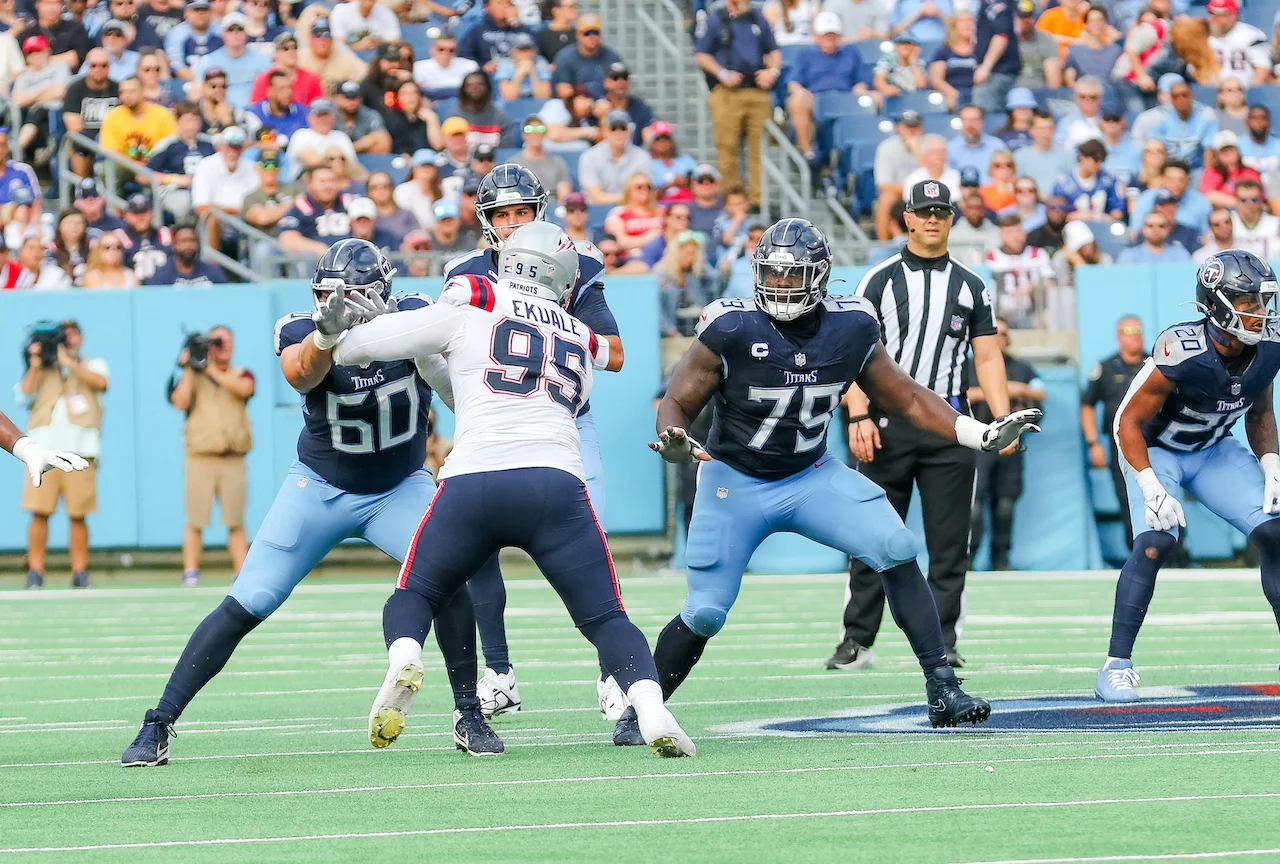NASHVILLE, Tenn. – For Lloyd Cushenberry to be in the Titans' starting lineup for opening day, he’d have to hit the general Achilles tear recovery timetable of 10 months right on the dot.
That could be a big ask.

We don't know his current status precisely. Sam Mustipher, Corey Levin or someone else may be in the middle of Dan Moore and Peter Skoronski on the left and Kevin Zeitler and JC Latham on the right when the Titans kickoff in Denver on Sept. 7.
I found three other offensive linemen who have suffered Achilles tears in recent history to provide some context for Cushenberry.
They’ve had mixed results.
Patriots first-round pick Isaiah Wynn suffered the injury in the preseason of his rookie year, on Aug. 16, 2018. He was on the field one year and three weeks later for opening day. But in his second game back, he suffered a turf toe injury that put him on IR for the rest of his second season.
He’s been an injury-prone player over six seasons with New England and Miami, missing 60 of a possible 100 games and he’s currently a free agent.
Brandon Brooks was the best of the offensive linemen to suffer the injury, and sadly he suffered it twice.
The Eagles' left tackle tore his right Achilles on Jan. 13, 2019 in a divisional round playoff loss to the Saints and made a super-fast recovery. He was back in just under eight months, starting the 2019 season opener.
When he tore his right Achilles in June of 2020, he didn’t return until opening day of 2021, roughly 15 months later.
After the second tear, then-Eagles coach Doug Pederson said his "heart sunk."
"This guy has worked extremely hard to get himself back and back in shape, back in playing shape, to have a solid 2020 season,” Pederson said, per Tim McManus. “So obviously we feel for him, having to go through this again, obviously, but we know that he'll push through. He's done a great job with all his rehab and getting himself back, so we're very confident there," he said.
Alijah Vera-Tucker of the Jets tore an Achilles on Oct. 8 of 2023 and was back for Week 1 of the following season, so he had 11 months to make it back. He missed two games neaqr the middle of the season with an ankle injury.
Most in-depth examinations of Achilles injuries focus on skill players, who obviously have to move and cut more frequently than linemen.
This undated piece from fantasyinjuryteam.com by Tom Christ paints a grim picture of the fates of skill position players who suffer Achilles tears.
"The research tells us that only 30% of NFL players who tear their Achilles are able to return to their professional careers," he wrote.
Kevin Dyson suffered a terrible knee injury and a hamstring injury during his Titans career. When he moved on to Carolina in 2003, he tore his Achilles in summer practice. He made it back for one game late that season and his career was over after six seasons
I exchanged texts with Christ to delve into the differences for skill players versus linemen recovering from the injury.
![]() "It’s absolutely hardest for guys who rely on explosion, change of direction, and getting to their top speed because so much of that depends on the calf-Achilles complex ability to function like a spring, where it loads and recoils, creating elastic power, he said. "This happens during strides more so than with brute strength. Linemen need brute strength and power. It’s not the same because they aren’t striding like a running back, receiver, or DB does.
"It’s absolutely hardest for guys who rely on explosion, change of direction, and getting to their top speed because so much of that depends on the calf-Achilles complex ability to function like a spring, where it loads and recoils, creating elastic power, he said. "This happens during strides more so than with brute strength. Linemen need brute strength and power. It’s not the same because they aren’t striding like a running back, receiver, or DB does.
"Think of it like a skill position needs the spring, as if they were a triple jumper versus a lineman needs double-leg power like a squat/power clean. It’s WAY easier to regain the double leg power, but also only so much of that comes from the calf-Achilles. Most of the power is the glutes and thighs, whereas a whole lot of single-leg spring during running and cutting comes from the Achilles."